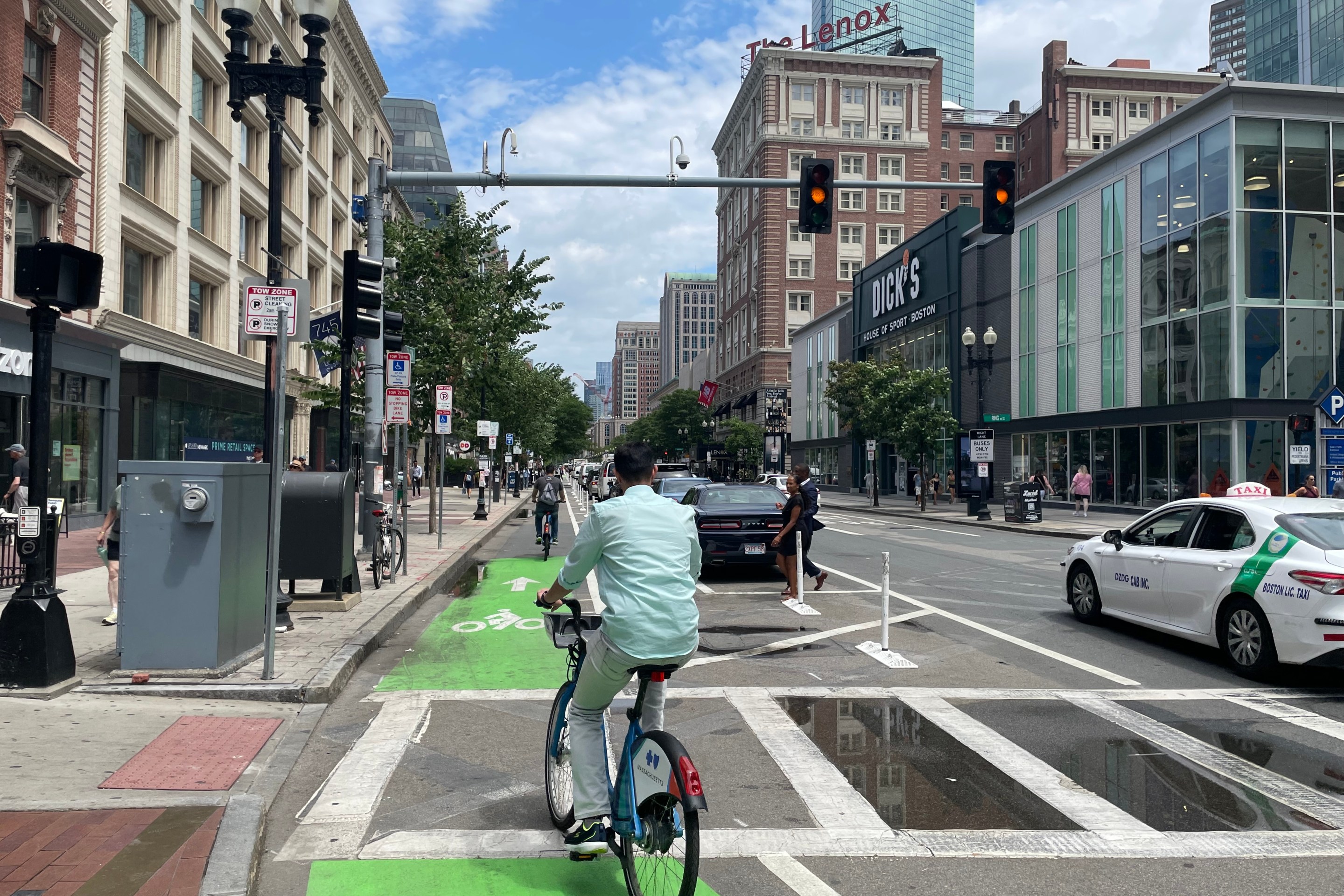On Monday, the Boston City Council held its annual public hearing on the Boston Transportation Department's budget, and city staff revealed a few new details about their plans for Boston's streets in the coming year.
Transportation Department Commissioner Greg Rooney said that the agency would add 4.5 miles of separated bike lanes to the city's bike network this year – a decrease from last year's total, when 6.5 new miles of protected bike lanes were created in downtown Boston and along the American Legion Highway and Cummins Highway in Mattapan.
Rooney did not specify where those new 4.5 miles of bike lanes would be built, but some projects that are likely to begin construction this year include the Tremont Street protected bike lanes through the South End and flexpost-protected bike lanes on Cambridge Street in Allston.
After the budget hearing, the Boston Cyclists Union (BCU) submitted a petition asking the city to commit to building more protected bikeways in the coming year.
The petition, with over 1,500 signatures from people who live and work in Boston, asks the city to build 10 new miles of protected bike lanes this year. The petition specifically requested action on key projects that have been mired in opposition from motorists, including Charles Street in Beacon Hill, Massachusetts Avenue in Dorchester, and Centre Street in West Roxbury.
"The Go Boston 2030 5-year, short-term plan called for 32 miles (of protected bike lanes) to be built. 4.5 miles just is not enough," Becca Wolfson, the BCU's executive director, told the City Council on Monday (editor's note: Wolfson also serves on the StreetsblogMASS Board of Directors).
Go Boston 2030, the city’s long-term transportation plan, was released in March 2017. According to Wolfson, the city still needs to add 20 new miles of protected bike lanes by 2022 to meet its five-year goal for better bike infrastructure.
Councilors Kenzie Bok and Michael Flaherty both asked BTD staff to address the discrepancy between the Department's 4.5-mile goal for the coming year and the Cyclists' Union's petition to do more.
"Is there a chance we could drive that number upward?" asked Councilor Bok.
"We want to be very deliberate in our approach and make sure that we are getting these bike lanes correct," answered BTD Commissioner Rooney. "We're committed to the 4.5 miles in additions to what we did last year. As opportunities arise, we always look to see what we can do. The opportunity to add to that number is something that we would certainly be open to if circumstances allow."
"Well we'll have to hope that they do," reponded Bok.
'Slow Streets' Projects Picking Up Speed
As in past years, nearly every city councilor asked BTD staff to do more neighborhood traffic calming projects – a frequent request from constituents.
Rooney explained that the city's popular Neighborhood Slow Streets program, which plans and delivers safety improvements to entire neighborhoods and lowers local speed limits to 20 mph, is finally catching up with a backlog of projects and expects to take new applications from more neighborhoods later this year.
A number of Neighborhood Slow Streets improvements are under construction this spring, including this mini-roundabout in the Norfolk-Talbot triangle district, just east of Harambee Park:
Nice new rotary on Southern Ave by Talbot Ave in Dorchester! pic.twitter.com/41SU7SFvBY
— Adam Pieniazek🚲🚶🚆🚇🚍🚀 (@adamPDOTcom) May 6, 2021
A Boston Ciclovia?
Councilor Andrea Campbell relayed a question about the status of "open streets" events, and whether they could be expanded beyond touristy shopping streets like Newbury Street to other areas of the city, particularly communities of color.
In response, BTD Director of Planning Vineet Gupta revealed that the city is working on a broader "open streets" concept that connects more neighborhoods, like Bogota's famous Ciclovia events.
"These would be similar with the 'Circle the City' events that were done maybe 5 years ago now, where we basically created car-free streets," said Gupta. "We are looking at a similar program. We have to determine the locations, but these are miles-long corridors that would be car-free to allow people to come out walking, for cultural activities to take place... That's something that's in the very early stages of design."






